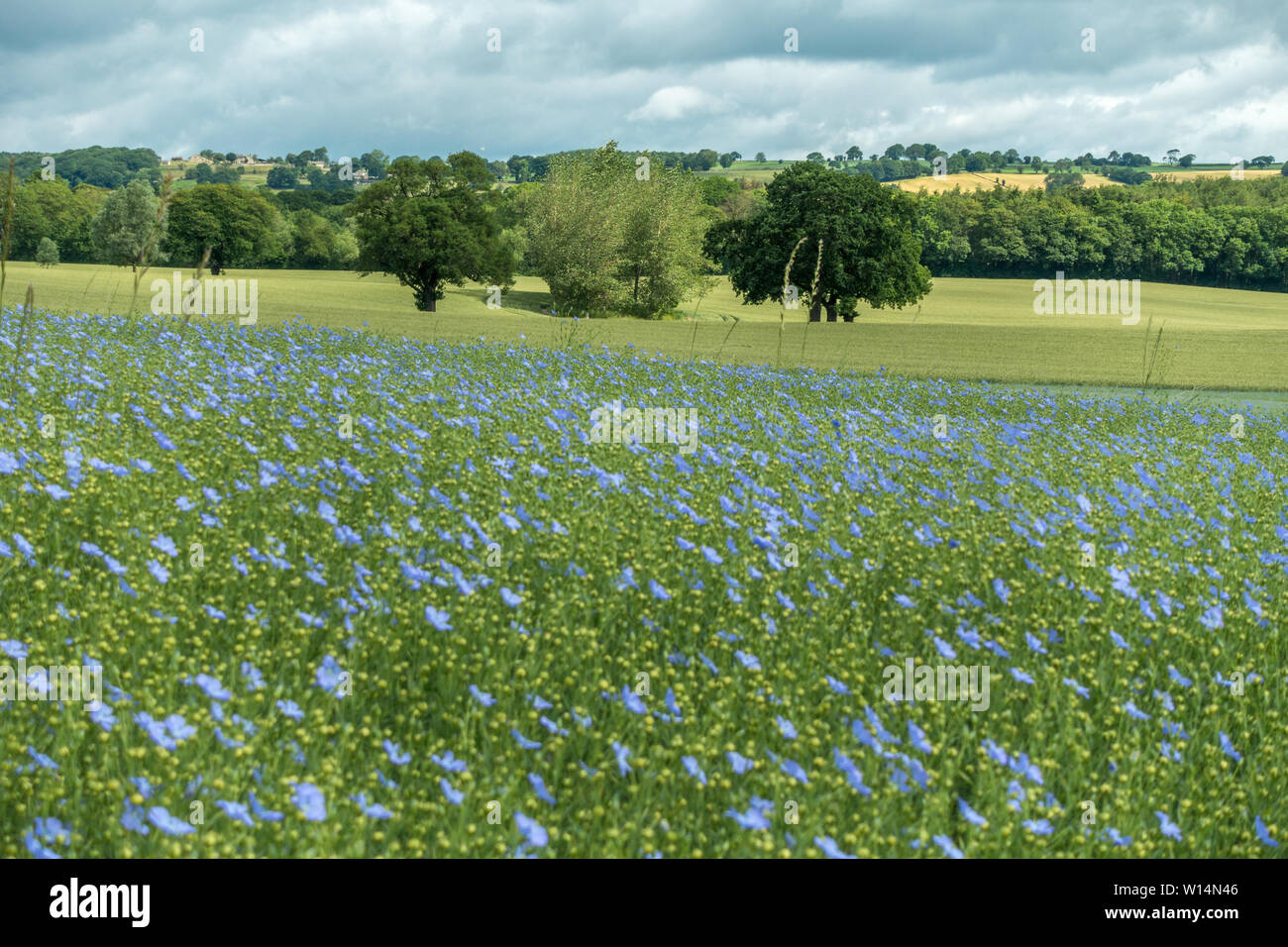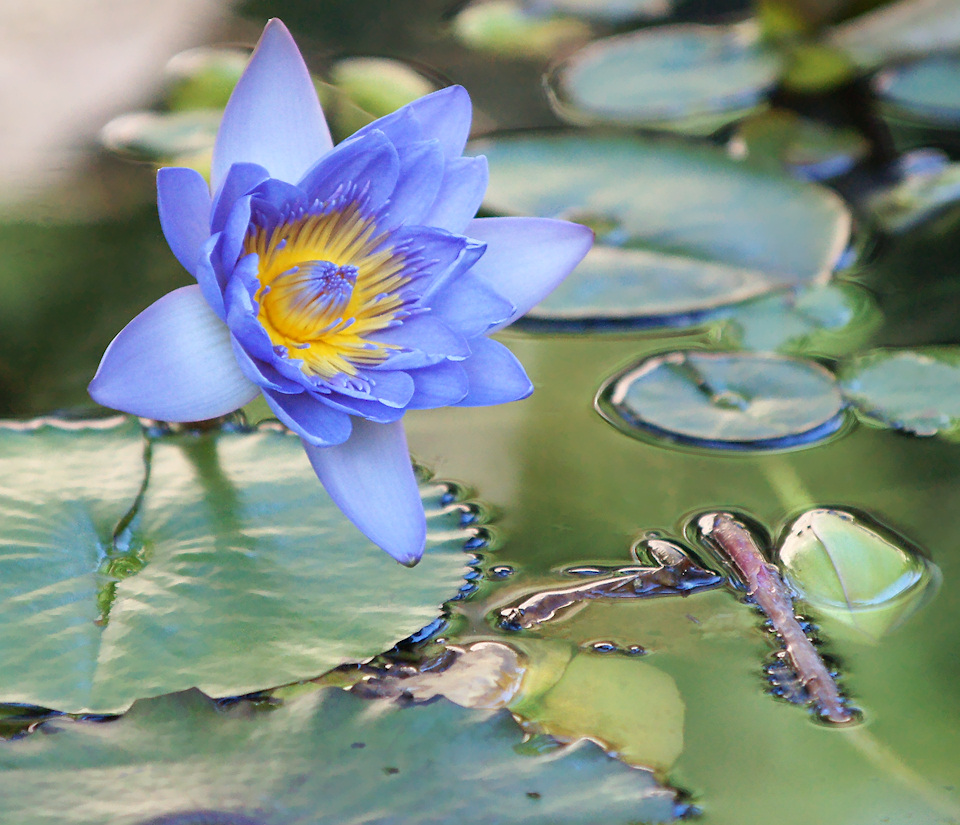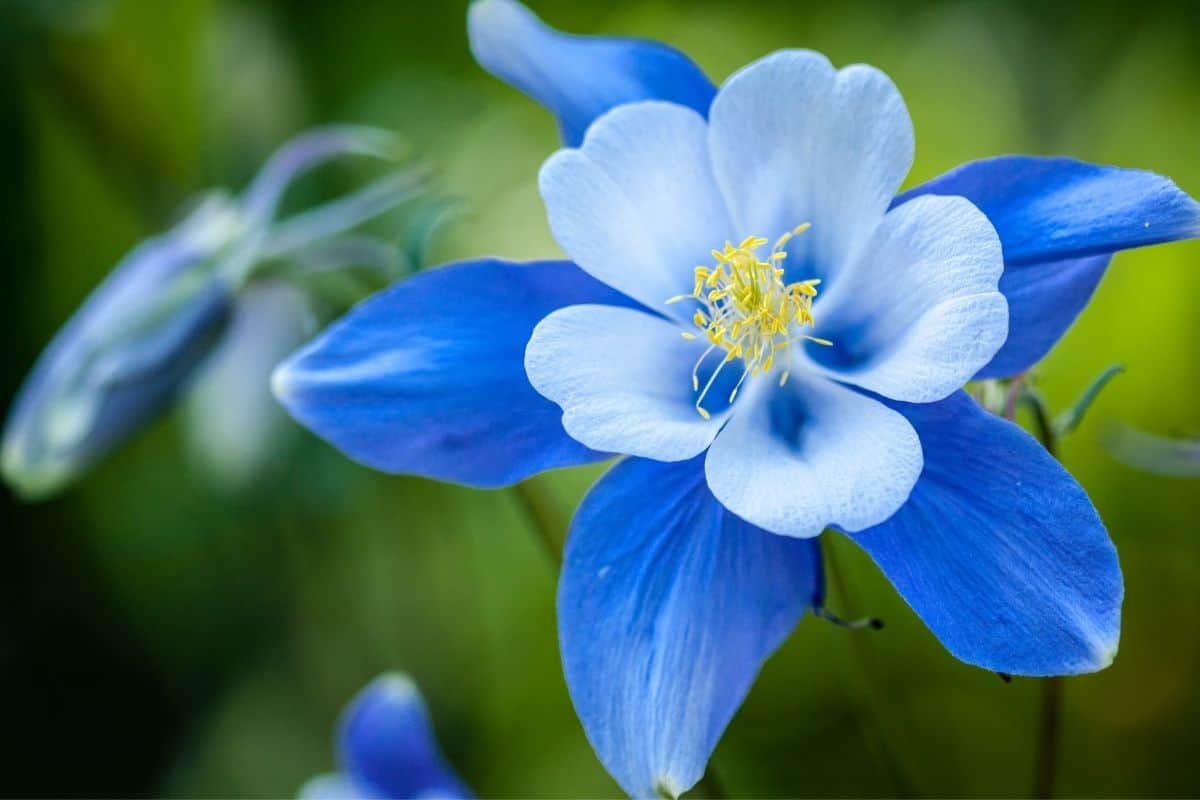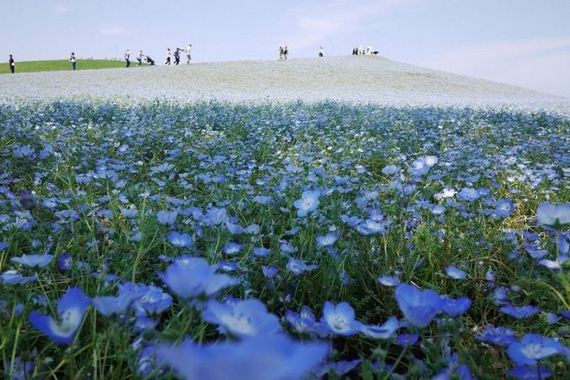Unveiling the Magic of Blue Flowers in a Field
Blue flowers in a field are a breathtaking sight, evoking a sense of serenity and wonder. The gentle swaying of these azure blooms in the breeze creates a mesmerizing display of natural beauty. From cornflowers to forget-me-nots and bluebells, various types of blue flowers can be found in fields, each with its unique characteristics and charm.
The sight of blue flowers in a field is often associated with feelings of tranquility and peacefulness. The vibrant blue color of these flowers seems to have a calming effect on the mind and soul. Whether it’s a sprawling field of bluebells or a patch of cornflowers, the beauty of blue flowers in a field is undeniable.
One of the most striking aspects of blue flowers in a field is their ability to create a sense of depth and dimension. The varying shades of blue, from pale sky blue to deep navy, seem to blend seamlessly together, creating a sense of layering and texture. This visual effect is further enhanced by the gentle movement of the flowers in the breeze, creating a sense of dynamism and energy.
Blue flowers in a field also have a profound impact on the local ecosystem. These flowers provide a vital source of food and shelter for various species of bees, butterflies, and other pollinators. The presence of blue flowers in a field can also help to maintain soil health, reduce erosion, and support biodiversity.
Whether you’re a nature lover, a photographer, or simply someone who appreciates beauty, blue flowers in a field are a sight to behold. So, take a moment to appreciate the magic of these azure blooms and let their tranquility and wonder inspire you.
How to Create a Stunning Blue Flower Field in Your Own Backyard
Creating a blue flower field in your own backyard can be a rewarding and beautiful experience. With the right planning and care, you can enjoy a stunning display of blue flowers that will attract pollinators and add a touch of serenity to your outdoor space.
The first step in creating a blue flower field is to choose the right location. Look for a spot that receives full sun to partial shade, depending on the type of blue flowers you want to grow. Make sure the area is level and well-drained, as blue flowers don’t like wet feet.
Next, prepare the soil by adding a 2-inch layer of organic matter such as compost or well-rotted manure. This will help improve the soil’s structure and fertility, giving your blue flowers a strong start. You can also use a soil test kit to determine your soil’s pH level and adjust it if necessary.
Now it’s time to select the right blue flowers for your field. Some popular varieties include cornflowers, forget-me-nots, and bluebells. You can purchase seeds from a reputable supplier such as Burpee or Miracle-Gro, or buy seedlings from a local nursery.
Plant the seeds or seedlings in the spring or fall, depending on your location and the type of blue flowers you’re growing. Space them about 12-18 inches apart, and water well after planting. Keep the soil consistently moist during the first few weeks after planting, but avoid overwatering.
As your blue flowers grow, make sure to provide them with the right care. Fertilize them regularly with a balanced fertilizer, and deadhead the flowers to encourage more blooms. You can also use a mulch to retain moisture and suppress weeds.
With proper care and attention, your blue flower field will be in full bloom in no time. Enjoy the stunning display of blue flowers and the benefits they bring to your outdoor space, including attracting pollinators and adding a touch of serenity.
Some popular products to help you create a stunning blue flower field include:
- Miracle-Gro All Purpose Garden Soil
- Burpee Blue Flower Seeds
- Nikon D5600 Camera for capturing the beauty of your blue flower field
By following these steps and using the right products, you can create a stunning blue flower field in your own backyard that will bring joy and beauty to your outdoor space.
The Symbolism and Meaning Behind Blue Flowers
Blue flowers have been a symbol of tranquility, loyalty, and wisdom across various cultures and traditions. In the language of flowers, blue blooms are often associated with feelings of serenity, peace, and calmness. This symbolism is deeply rooted in the natural beauty of blue flowers, which evoke a sense of wonder and awe in those who behold them.
In art and literature, blue flowers have been used as a symbol and motif to convey a range of emotions and ideas. In Impressionist paintings, blue flowers are often depicted as a symbol of hope and renewal. In poetry, blue flowers are often used to represent the fleeting nature of life and the beauty of the natural world.
In many cultures, blue flowers are also associated with loyalty and fidelity. In ancient Greece, blue flowers were used as a symbol of love and devotion. In modern times, blue flowers are often used in wedding bouquets and arrangements to represent the commitment and loyalty of the couple.
Blue flowers have also been used in various cultural and traditional practices to represent wisdom and knowledge. In many Asian cultures, blue flowers are associated with the wisdom and insight of the Buddha. In Western cultures, blue flowers are often used in educational and intellectual pursuits to represent the pursuit of knowledge and understanding.
The symbolism and meaning behind blue flowers are not limited to their cultural and traditional associations. Blue flowers also have a profound impact on our emotional and psychological well-being. Studies have shown that exposure to blue flowers can reduce stress and anxiety, promote feelings of calmness and relaxation, and even improve our mood and cognitive function.
In the context of blue flowers in a field, the symbolism and meaning behind these blooms take on a deeper significance. A field of blue flowers represents a sense of freedom and joy, a celebration of the beauty and wonder of the natural world. Whether you’re a nature lover, an artist, or simply someone who appreciates the beauty of blue flowers, a field of blue blooms is a truly unforgettable experience.
Some popular blue flowers that are often used in symbolic and cultural practices include:
- Forget-me-nots, which represent love and loyalty
- Cornflowers, which represent hope and renewal
- Bluebells, which represent wisdom and knowledge
By understanding the symbolism and meaning behind blue flowers, we can appreciate the deeper significance of these blooms and the role they play in our cultural, traditional, and emotional lives.
Photographing Blue Flowers in a Field: Tips and Tricks
Capturing the beauty of blue flowers in a field can be a challenging but rewarding experience for photographers. With the right techniques and equipment, you can create stunning images that showcase the vibrant colors and delicate textures of these blooms.
One of the most important factors in photographing blue flowers in a field is lighting. The soft, warm light of the golden hour (just before sunset) is ideal for capturing the subtle colors and textures of the flowers. Avoid harsh midday sun, as it can create unflattering shadows and highlights.
Composition is also crucial when photographing blue flowers in a field. Consider using a wide-angle lens to capture the expansive view of the field, or a macro lens to focus on the intricate details of individual flowers. Experiment with different angles and perspectives to add depth and interest to your images.
Camera settings can also make a big difference in capturing the beauty of blue flowers in a field. Use a low ISO (100-400) to minimize noise and ensure the best image quality. A wide aperture (f/2.8-f/5.6) can help create a shallow depth of field, blurring the background and emphasizing the flowers.
Popular photography equipment for capturing blue flowers in a field includes:
- Nikon D850 camera body
- Canon EF 24-70mm f/2.8L II USM lens
- Manfrotto BeFree Live tripod
When photographing blue flowers in a field, it’s also important to consider the environment and the flowers themselves. Be respectful of the field and the flowers, and avoid damaging or trampling them. Take your time and enjoy the experience of capturing the beauty of these stunning blooms.
Some popular techniques for photographing blue flowers in a field include:
- Panning: follow the movement of the flowers in the wind to create a sense of motion
- Focus stacking: combine multiple images with different focus points to create a single image with extended depth of field
- Bracketing: capture multiple images at different exposures to create a single image with optimal contrast and detail
By following these tips and techniques, you can create stunning images of blue flowers in a field that showcase their beauty and elegance.
The Benefits of Blue Flowers for Wildlife and the Environment
Blue flowers in a field are not only a breathtaking sight, but they also play a crucial role in supporting local wildlife and maintaining a healthy ecosystem. These flowers provide a vital source of food and shelter for various species of bees, butterflies, and other pollinators.
Bees, in particular, are attracted to the nectar-rich blue flowers, which provide them with the energy they need to survive. By planting blue flowers in a field, you can help support the local bee population and contribute to the health of the ecosystem.
Butterflies, too, are drawn to the blue flowers, which provide them with a source of food and shelter. The flowers’ nectar is rich in nutrients, which helps to sustain the butterflies as they migrate and reproduce.
In addition to supporting local wildlife, blue flowers in a field also play a role in maintaining soil health. The roots of the flowers help to stabilize the soil, preventing erosion and runoff. This, in turn, helps to maintain the quality of the soil and prevent the loss of nutrients.
Planting blue flowers in a field can also help to support biodiversity. By creating a habitat for a variety of species, you can help to promote the health and resilience of the ecosystem.
Some popular blue flowers that are beneficial for wildlife and the environment include:
- Cornflowers, which are a rich source of nectar for bees and butterflies
- Forget-me-nots, which provide a source of food and shelter for small mammals and birds
- Bluebells, which help to stabilize the soil and prevent erosion
By planting blue flowers in a field, you can help to support local wildlife and maintain a healthy ecosystem. This, in turn, can have a positive impact on the environment and contribute to the beauty and wonder of nature.
In addition to the benefits for wildlife and the environment, blue flowers in a field can also have a positive impact on human health. Studies have shown that exposure to nature can help to reduce stress and improve mental health.
By creating a blue flower field, you can help to promote the health and well-being of both humans and wildlife, while also contributing to the beauty and wonder of nature.
Blue Flowers in Art and Literature: A Historical Perspective
Blue flowers have been a source of inspiration for artists and writers throughout history. From Impressionist paintings to poetic works, blue flowers have been used as a symbol and motif to convey a range of emotions and ideas.
In the world of art, blue flowers have been depicted in various forms and styles. Impressionist artists like Claude Monet and Pierre-Auguste Renoir often painted blue flowers in their works, capturing the fleeting effects of light and color. In their paintings, blue flowers were often used to represent the beauty and tranquility of nature.
In literature, blue flowers have been used as a symbol and motif in various works. In poetry, blue flowers have been used to represent love, loss, and longing. In novels, blue flowers have been used to symbolize hope, renewal, and transformation.
One of the most famous examples of blue flowers in literature is in the poem “The Blue Flower” by Novalis. In this poem, the blue flower is used as a symbol of the infinite and the eternal. The poem explores the idea of the blue flower as a symbol of the human desire for transcendence and connection with the divine.
In addition to their use in art and literature, blue flowers have also been used in various cultural and traditional practices. In many cultures, blue flowers are associated with good luck, prosperity, and happiness. In some cultures, blue flowers are used in wedding ceremonies and other celebrations to symbolize love and commitment.
Some popular examples of blue flowers in art and literature include:
- Claude Monet’s “Water Lilies” series, which features blue flowers in a serene and peaceful setting
- Pierre-Auguste Renoir’s “The Luncheon of the Boating Party“, which features blue flowers in a vibrant and lively setting
- Novalis’s “The Blue Flower”, which explores the symbolism and meaning of blue flowers in a poetic and philosophical context
By examining the depiction of blue flowers in art and literature, we can gain a deeper understanding of their cultural and symbolic significance. We can also appreciate the beauty and creativity of the artists and writers who have used blue flowers as a source of inspiration in their works.
Blue flowers continue to be a source of inspiration for artists and writers today. Whether used as a symbol, motif, or simply as a beautiful and evocative image, blue flowers remain a powerful and enduring presence in the world of art and literature.
Visiting Blue Flower Fields Around the World
Blue flower fields are a breathtaking sight to behold, and there are many destinations around the world where you can experience their beauty. From the Netherlands to Japan, and from the United States to Australia, blue flower fields are a popular tourist attraction.
One of the most famous blue flower fields in the world is the Keukenhof Gardens in the Netherlands. This stunning garden is home to over 7 million tulips, daffodils, and other flowers, including blue flowers like forget-me-nots and cornflowers. The best time to visit the Keukenhof Gardens is in the spring, from March to May.
Another popular destination for blue flower enthusiasts is Japan. The country is home to many beautiful blue flower fields, including the famous Nemophila flowers in Hitachi Seaside Park. These stunning flowers bloom in the spring and create a breathtaking sight of blue and white flowers.
In the United States, there are many beautiful blue flower fields to visit. One of the most popular destinations is the Texas Hill Country, where you can see stunning bluebonnets in the spring. Another popular destination is the Pacific Northwest, where you can see beautiful blue flowers like forget-me-nots and cornflowers.
Australia is also home to many beautiful blue flower fields. One of the most popular destinations is the Blue Mountains, where you can see stunning blue flowers like forget-me-nots and cornflowers. Another popular destination is the countryside of New South Wales, where you can see beautiful blue flowers like bluebells and forget-me-nots.
Some popular blue flower fields to visit around the world include:
- Keukenhof Gardens, Netherlands
- Hitachi Seaside Park, Japan
- Texas Hill Country, USA
- Pacific Northwest, USA
- Blue Mountains, Australia
- New South Wales countryside, Australia
When planning a trip to visit blue flower fields, it’s essential to research the best times to visit and how to get there. Many blue flower fields are open to the public during specific times of the year, and some may require tickets or reservations.
Visiting blue flower fields is a great way to experience the beauty of nature and appreciate the stunning displays of blue flowers. Whether you’re a nature lover, a photographer, or simply someone who appreciates beauty, blue flower fields are a must-see destination.
Conclusion: The Enduring Allure of Blue Flowers in a Field
Blue flowers in a field are a breathtaking sight that evokes a sense of serenity and wonder. From their natural beauty to their cultural and environmental importance, blue flowers in a field are a true marvel of nature.
Throughout this article, we have explored the various types of blue flowers that can be found in fields, including cornflowers, forget-me-nots, and bluebells. We have also discussed the symbolism and meaning behind blue flowers, including their association with tranquility, loyalty, and wisdom.
In addition to their natural beauty and cultural significance, blue flowers in a field also play an important role in supporting local wildlife and maintaining a healthy ecosystem. By planting blue flowers in fields, we can help to support bees and butterflies, and contribute to the conservation of our environment.
Whether you are a nature lover, a photographer, or simply someone who appreciates beauty, blue flowers in a field are a must-see destination. From the Netherlands to Japan, and from the United States to Australia, blue flower fields are a popular tourist attraction that offer a unique and unforgettable experience.
As we conclude this article, we encourage readers to appreciate and preserve the beauty of blue flowers in a field. Whether you are planting a blue flower field in your own backyard or visiting a blue flower field in a distant land, we hope that you will cherish the experience and remember the enduring allure of blue flowers in a field.
By preserving the natural beauty of blue flowers in a field, we can also help to preserve the cultural and environmental significance of these stunning displays of nature. Let us work together to protect and conserve the beauty of blue flowers in a field for future generations to enjoy.
In the end, blue flowers in a field are a reminder of the beauty and wonder of nature. They inspire us to appreciate the simple things in life and to cherish the beauty that surrounds us. Whether you are a nature lover or simply someone who appreciates beauty, blue flowers in a field are a true marvel of nature that will leave you in awe.






:max_bytes(150000):strip_icc()/__opt__aboutcom__coeus__resources__content_migration__mnn__images__2017__07__blue_hydrangea-0750eb1868c7465790d3c7c3f1c5f7ca.jpg)


